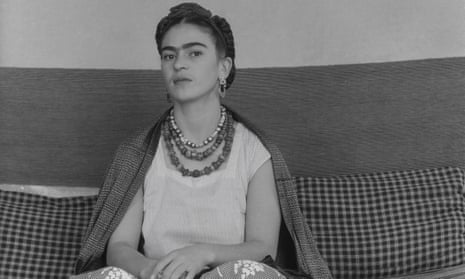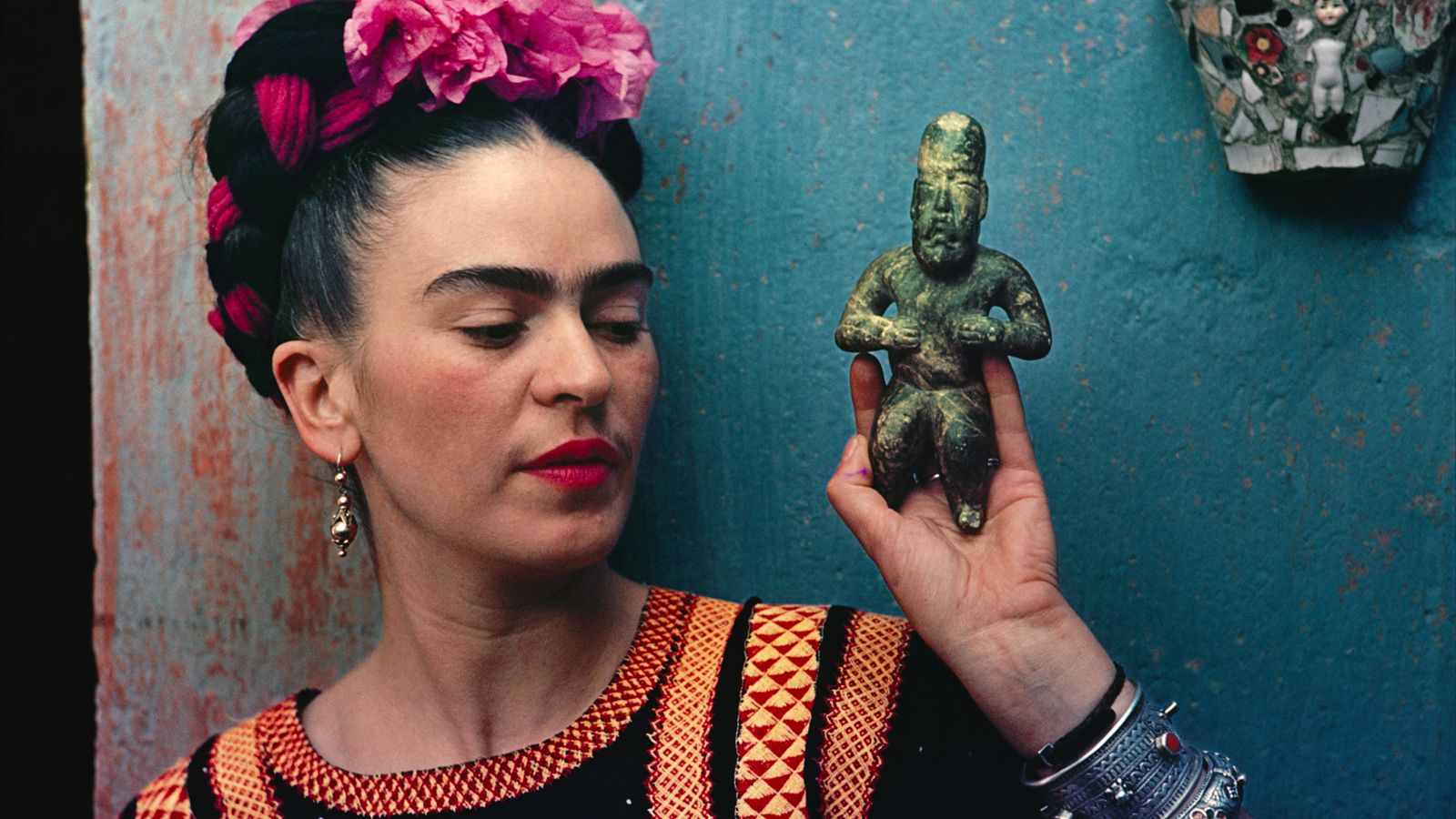Frida Kahlo: An Icon of Art, Resilience, and Self-Expression
 Frida Kahlo, one of the most celebrated artists of the 20th century, is renowned for her iconic self-portraits, vibrant colors, and bold exploration of identity, pain, and femininity. Born on July 6, 1907, in Coyoacán, Mexico City, Kahlo's life was marked by both triumph and tragedy, which deeply influenced her art and left an indelible mark on the world of modern art.
Frida Kahlo, one of the most celebrated artists of the 20th century, is renowned for her iconic self-portraits, vibrant colors, and bold exploration of identity, pain, and femininity. Born on July 6, 1907, in Coyoacán, Mexico City, Kahlo's life was marked by both triumph and tragedy, which deeply influenced her art and left an indelible mark on the world of modern art.
Kahlo's early life was characterized by physical and emotional challenges. At the age of six, she contracted polio, which left her with a limp and contributed to feelings of isolation and insecurity. Then, at the age of 18, Kahlo was involved in a devastating bus accident that left her with severe injuries, including a fractured spine, pelvis, and ribs. During her recovery, Kahlo turned to painting as a form of therapy and self-expression, using a specially designed easel that allowed her to paint while lying in bed. Despite her physical pain and limitations, Kahlo's art flourished, and she soon gained recognition for her unique style and powerful imagery. Her paintings often featured vivid colors, intricate symbolism, and intimate portrayals of her own experiences and emotions. Through her art, Kahlo explored themes of identity, gender, race, and class, challenging societal norms and conventions and asserting her own agency and autonomy.
Despite her physical pain and limitations, Kahlo's art flourished, and she soon gained recognition for her unique style and powerful imagery. Her paintings often featured vivid colors, intricate symbolism, and intimate portrayals of her own experiences and emotions. Through her art, Kahlo explored themes of identity, gender, race, and class, challenging societal norms and conventions and asserting her own agency and autonomy.
One of the most striking aspects of Kahlo's work is her unflinching portrayal of her own physical and emotional suffering. In many of her self-portraits, Kahlo depicted herself with a stoic expression, surrounded by imagery that symbolized pain, resilience, and defiance. Her iconic "Self-Portrait with Thorn Necklace and Hummingbird" (1940), for example, features Kahlo with a thorn necklace piercing her neck, while a hummingbird hovers nearby, representing the fleeting beauty and fragility of life. Kahlo's art also served as a form of political and social commentary, reflecting her deep engagement with the cultural and political movements of her time. As a proud Mexican woman of mixed Indigenous and European heritage, Kahlo celebrated her cultural identity and heritage in her art, incorporating traditional Mexican motifs, symbolism, and iconography. Her painting "The Two Fridas" (1939), for example, explores themes of duality and identity, depicting two versions of herself—one wearing traditional Tehuana attire and the other in a European-style dress—connected by intertwining veins and arteries.
Kahlo's art also served as a form of political and social commentary, reflecting her deep engagement with the cultural and political movements of her time. As a proud Mexican woman of mixed Indigenous and European heritage, Kahlo celebrated her cultural identity and heritage in her art, incorporating traditional Mexican motifs, symbolism, and iconography. Her painting "The Two Fridas" (1939), for example, explores themes of duality and identity, depicting two versions of herself—one wearing traditional Tehuana attire and the other in a European-style dress—connected by intertwining veins and arteries.
Throughout her life, Kahlo's personal and artistic journey intersected with numerous political and cultural movements, including the Mexican Revolution, the rise of Marxism and socialism, and the emergence of feminism and women's rights. Kahlo and her husband, the renowned Mexican muralist Diego Rivera, were active participants in leftist political circles and supporters of socialist causes, using their art to advocate for social justice, Indigenous rights, and the plight of the working class. Despite facing numerous challenges and setbacks, Kahlo's indomitable spirit and resilience shone through in her art and her life. She once famously declared, "I paint myself because I am so often alone and because I am the subject I know best." Through her art, Kahlo transformed her pain and suffering into a source of strength and empowerment, inspiring generations of artists, activists, and admirers around the world.
Despite facing numerous challenges and setbacks, Kahlo's indomitable spirit and resilience shone through in her art and her life. She once famously declared, "I paint myself because I am so often alone and because I am the subject I know best." Through her art, Kahlo transformed her pain and suffering into a source of strength and empowerment, inspiring generations of artists, activists, and admirers around the world.
Today, Frida Kahlo's legacy continues to resonate, her art transcending time and place to speak to the universal human experience. Her iconic self-portraits and powerful imagery continue to captivate audiences, while her fearless spirit and unwavering commitment to self-expression serve as a beacon of hope and inspiration for all those who dare to defy convention and embrace their true selves. Frida Kahlo, in both life and art, remains an enduring symbol of courage, resilience, and the transformative power of creativity.
Kahlo's influence extends far beyond the realm of visual art, permeating popular culture, fashion, and literature. Her iconic image, characterized by her distinctive unibrow, braided hair adorned with flowers, and colorful Tehuana attire, has become instantly recognizable and widely imitated, cementing her status as a cultural icon and feminist icon. In recent years, Kahlo's life and art have been the subject of numerous exhibitions, books, films, and documentaries, further solidifying her place in the pantheon of art history. Biographies such as Hayden Herrera's "Frida: A Biography of Frida Kahlo" and Barbara Mujica's "Frida" have shed light on Kahlo's life, art, and legacy, offering insights into her complex personality, relationships, and struggles.
In recent years, Kahlo's life and art have been the subject of numerous exhibitions, books, films, and documentaries, further solidifying her place in the pantheon of art history. Biographies such as Hayden Herrera's "Frida: A Biography of Frida Kahlo" and Barbara Mujica's "Frida" have shed light on Kahlo's life, art, and legacy, offering insights into her complex personality, relationships, and struggles.
Films like Julie Taymor's "Frida" (2002), starring Salma Hayek in the titular role, have brought Kahlo's story to the silver screen, introducing her to new generations of audiences and sparking renewed interest in her life and art. The film explores Kahlo's tumultuous relationship with Rivera, her affairs with both men and women, and her unyielding determination to overcome adversity and pursue her artistic vision.
Kahlo's influence can also be seen in the world of fashion and design, with designers and artists drawing inspiration from her bold aesthetic and fearless sense of style. From runway collections featuring vibrant colors, folkloric motifs, and intricate embroidery to fashion editorials and streetwear inspired by Kahlo's iconic look, her influence continues to permeate contemporary culture and design. But perhaps Kahlo's most enduring legacy lies in her role as a feminist icon and symbol of female empowerment. At a time when women's voices were often silenced and marginalized, Kahlo fearlessly asserted her own identity and agency, using her art to challenge gender norms and celebrate the female experience. Through her self-portraits and personal writings, Kahlo explored themes of female sexuality, reproductive rights, and bodily autonomy, paving the way for future generations of women artists to express themselves freely and unapologetically.
But perhaps Kahlo's most enduring legacy lies in her role as a feminist icon and symbol of female empowerment. At a time when women's voices were often silenced and marginalized, Kahlo fearlessly asserted her own identity and agency, using her art to challenge gender norms and celebrate the female experience. Through her self-portraits and personal writings, Kahlo explored themes of female sexuality, reproductive rights, and bodily autonomy, paving the way for future generations of women artists to express themselves freely and unapologetically. In conclusion, Frida Kahlo's life and art continue to captivate and inspire audiences around the world, transcending cultural boundaries and generations. Her bold and uncompromising approach to self-expression, coupled with her resilience in the face of adversity, make her a timeless symbol of courage, creativity, and female empowerment. As we celebrate her legacy, let us remember Frida Kahlo not only as an extraordinary artist but also as a trailblazer who dared to defy convention and embrace her true self, leaving an indelible mark on the world of art and culture for generations to come.
In conclusion, Frida Kahlo's life and art continue to captivate and inspire audiences around the world, transcending cultural boundaries and generations. Her bold and uncompromising approach to self-expression, coupled with her resilience in the face of adversity, make her a timeless symbol of courage, creativity, and female empowerment. As we celebrate her legacy, let us remember Frida Kahlo not only as an extraordinary artist but also as a trailblazer who dared to defy convention and embrace her true self, leaving an indelible mark on the world of art and culture for generations to come.




























